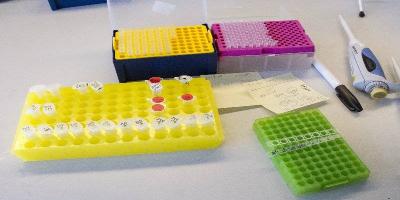Gene manipulation has fascinated humans since the discovery of ancient civilizations, as traits of crops, animals, and even humans are inherited. The recent mapping of the human genome has enhanced scientists' ability to accurately identify genes responsible for all traits, allowing them to directly modify their DNA codes. Over the years, it has become clear that these methods are laborious and can sometimes be inaccurate, until the advent of the "CRISPR-Cas9" gene-editing technology, commonly referred to as "CRISPR." This technology has transformed our relationship with genes due to its simplicity, low cost, and high efficiency.
Proponents of gene-editing technology expect that such a qualitative leap in genetics will help control pests, increase food production rates, and eliminate diseases affecting humans, though they also express concern about its potential misuse for engineering genetically modified children, creating dangerous mutations, or designing biological weapons targeting specific populations.
The Current Situation
Chinese researcher He Jiankui sparked widespread controversy in November 2017 when he claimed to have produced the world's first genetically modified children, stating that he used CRISPR to alter the genes of a pair of twins while they were still embryos, granting them the ability to resist HIV. This announcement quickly drew criticism from other experts in the field, as such modifications using CRISPR on embryos and germ cells—like sperm and fertilized or unfertilized eggs—mean that alterations would persist through generations. After a careful study for an entire year, an American advisory group for science and medicine decided to support research using techniques like CRISPR to modify human embryos for the prevention of serious diseases and disabilities.
Despite an increasing number of laboratories using CRISPR for experiments involving germ cell gene modifications, its application in other areas remains more common. These include efforts to eradicate malaria-carrying mosquitoes, produce mildew-resistant wheat, create eggs for individuals with allergies to them, and even revive the extinct mammoth.
Researchers have employed CRISPR for testing on human cells to repair a genetic mutation causing blindness and correct a defect responsible for cystic fibrosis. In late 2015, researchers published results showing the technique's success in treating adult animals by repairing a defective gene in mice suffering from Duchenne muscular dystrophy, allowing those animals to gradually regain their muscular strength. The first experiment on humans was conducted in China in 2016, where CRISPR was used to modify T-cells to treat lung cancer patients. By the end of 2018, a recruitment process began for volunteers with blood disorders, such as sickle cell anemia and beta-thalassemia, to join a clinical study in Europe.
On another note, two studies published in mid-2018 revealed that cells modified by CRISPR could potentially stimulate the development of tumors in the body, which may increase the risk of cancer. However, the relationship between them is still under research.
Background of the Topic
Simply put, "CRISPR-Cas9" is a primitive immune system in bacteria discovered by Japanese scientists about 30 years ago. The name is an acronym for "Clustered Regularly Interspaced Short Palindromic Repeats," referring to sequences of genetic codes derived from remnants of genes left behind by viruses invading bacteria. These bacterial sequences help identify DNA when exposed to invasion again, swiftly activating the Cas9 enzyme, which cuts the DNA.
Scientists did not fully understand how CRISPR works to cut and replace DNA segments until 2012, when researchers at the University of California, Berkeley, published a paper detailing the creation of molecules that act as "guides" to assist CRISPR in exploring the DNA and precisely targeting the segment to be cut.
Before long, scientists at the Harvard-affiliated Broad Institute modified CRISPR for use in human cells, leading to a dispute over patent rights related to this technology due to its implications on scientific awards that may be granted once the dispute is resolved in favor of one side. However, this dispute was settled in 2017, when the U.S. Patent Office declared that patents submitted by both the Broad Institute and the University of California, Berkeley, were sufficiently different to preclude contention, thereby rejecting Berkeley's appeal.
Any researcher with basic skills and equipment costing no more than a few thousand dollars can easily use CRISPR, opening wide avenues for innovation and at the same time for potential misuse. It cannot be claimed that CRISPR is free of flaws, at least at present, especially since about 60% of DNA cutting operations are unintended, and scientists still do not fully understand the effects of this.
The Ongoing Debate
All the risks and benefits must be taken into account before deciding to use CRISPR to treat individuals with diseases. The issues surrounding the use of gene-editing technology in germ cells are not merely medical but also philosophical.
Although there are immense benefits to using it, such as eradicating genetic diseases permanently, it must not be overlooked that any mistake made will have lasting consequences, as it would be transmitted through generations who have not had the opportunity to provide their prior consent. While some scientists express concern about moving towards the use of the technology for non-medical purposes, such as producing children with enhanced traits, philosopher Nick Bostrom and author Carl Shulman argued in a 2013 article that individuals with enhanced intellectual capacities could contribute positively to society through innovations that benefit everyone.




